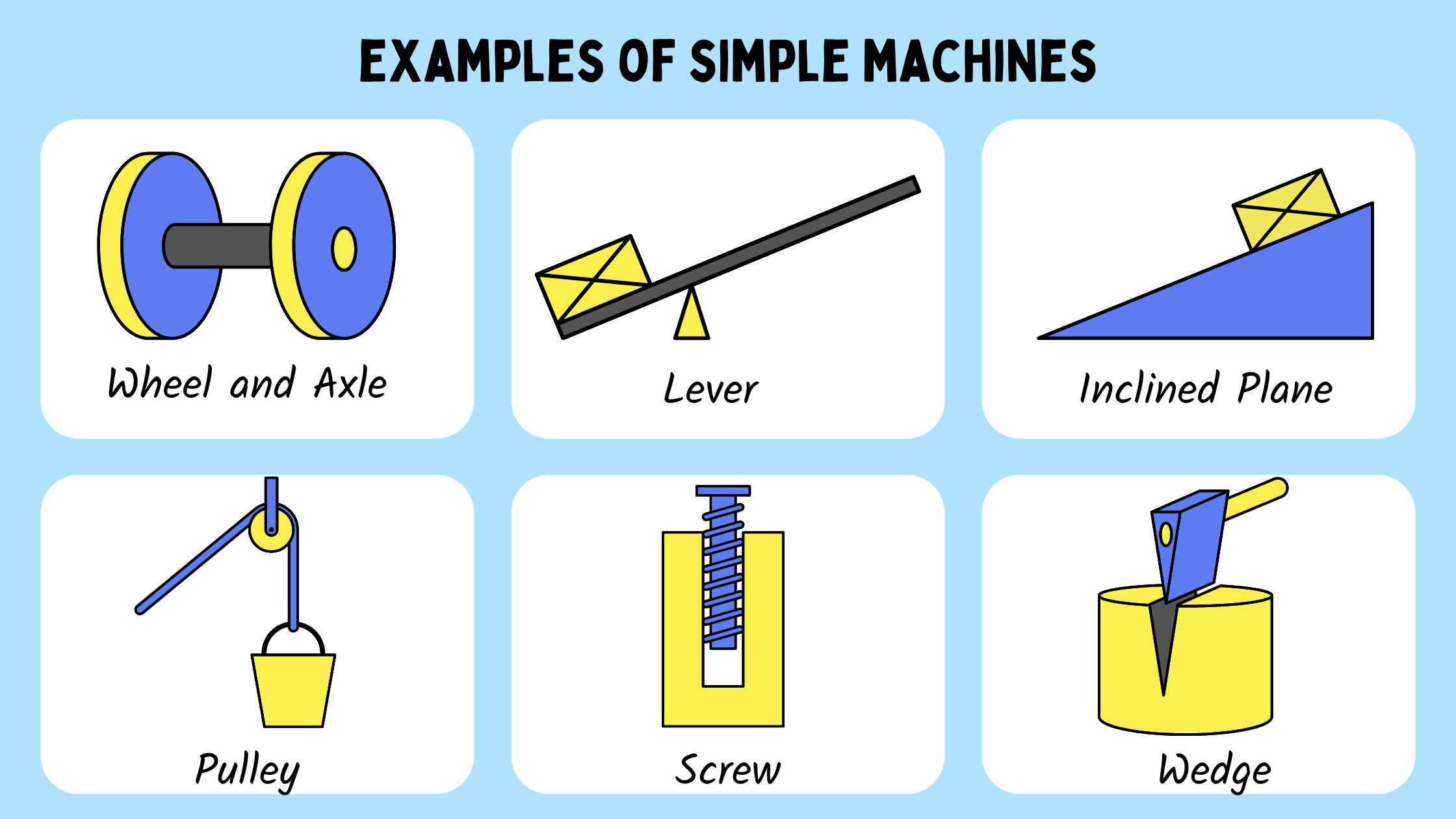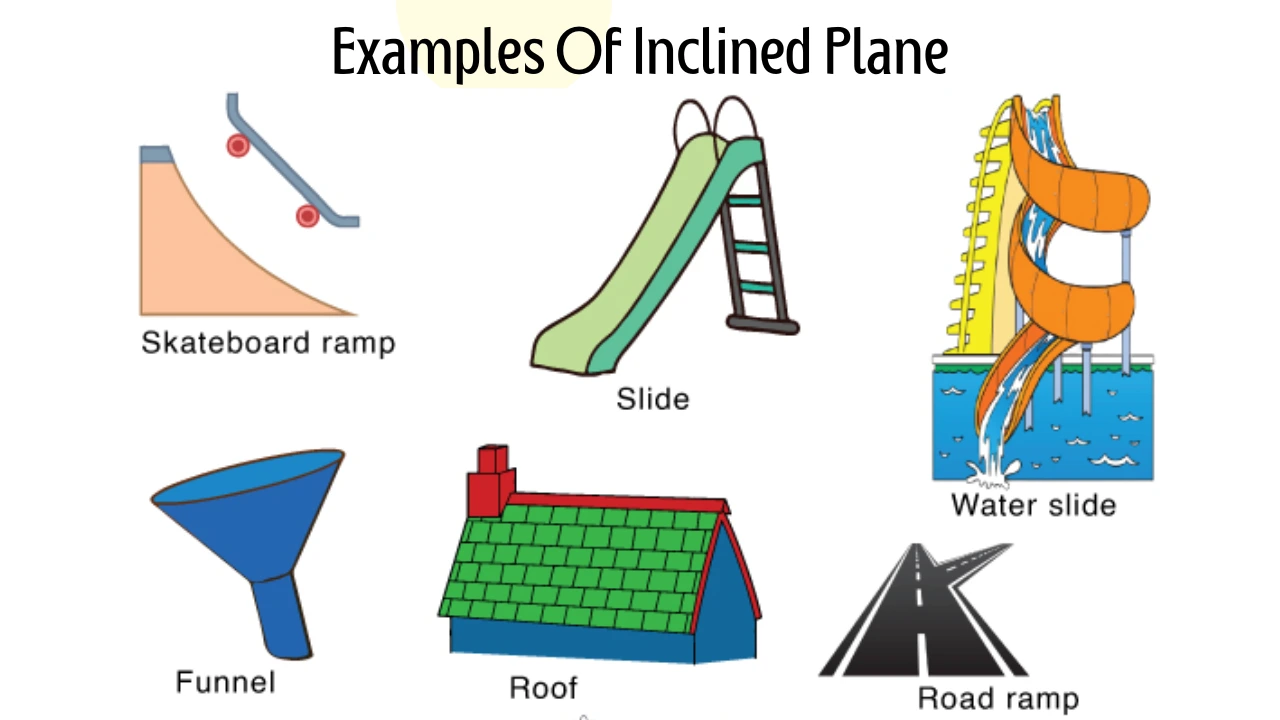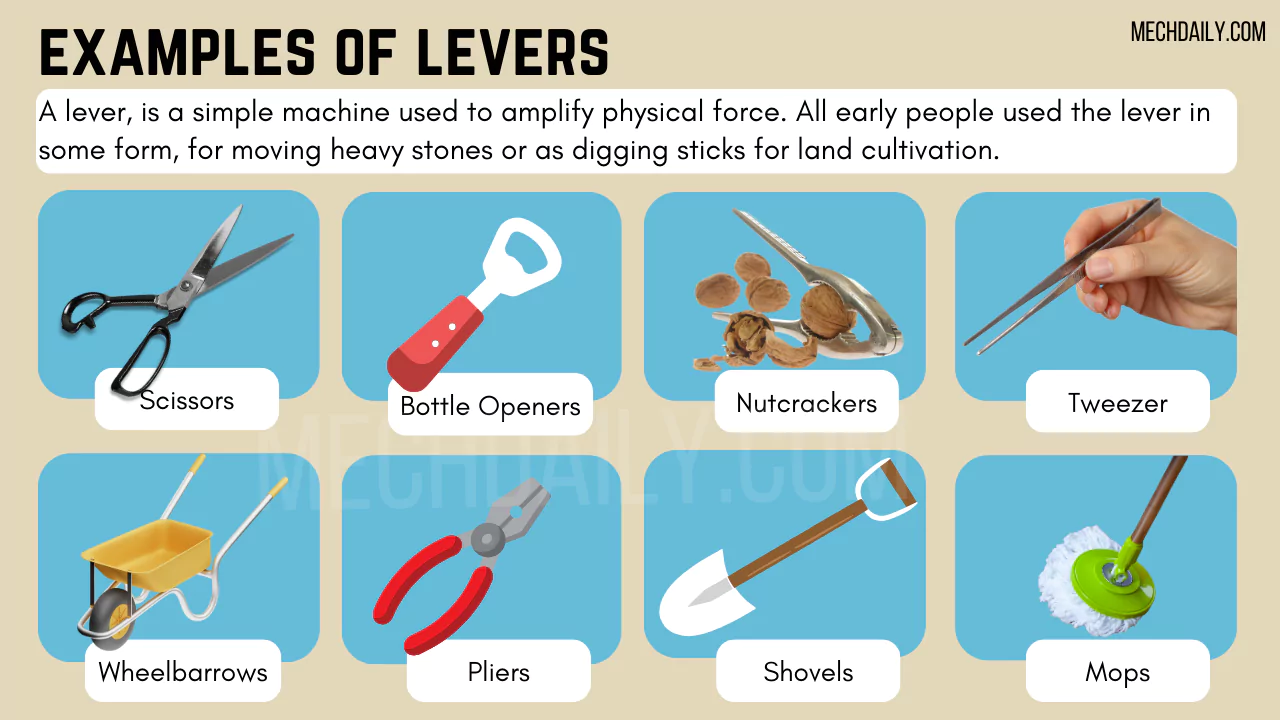The term simple machine refers to a basic mechanical device that is capable of performing work and aids in completing a task.
All six forms of simple machines can most likely be found in your home. Explore some examples to check which types of simple machines you have access to and use on a daily basis.
What is a Simple Machine?
Simple machine is a mechanical device that alters an active force’s direction and is divided into the six basic kinds. These can also be defined as the most fundamental types that utilize a mechanical advantage – which is also termed leverage to amplify the force.
A simple machine is applied to execute work by applying effort at an angle that is easy and convenient to reduce friction at another location. Simple machines allow an individual to expend less effort while completing a given task.
It is the term that references the classical examples of simple machines that were coined by Renaissance scientists:
- Screw
- Lever
- Inclined plane
- Pulley
- Wedge
- Wheel and axle
They all fall under the category of simple machines. It is a gadget that performs work from the application of a single force to counter one opposing force.
There is the assumption that all friction is neglected, and the work that will be given to the load will equal the work done due to the applied force on the load.
The device would be able to amplify the output force produced, however, it would be at the expense of moving the load a given distance. This is known as the mechanical advantage of the machine.
The simple machines and their examples are as follows:
- The lever: a crowbar, claw hammer, and pliers are common examples.
- The inclined plane: used for ramps, staircases, and even hilly roads
- Wedge: found in knives, axes, and even ploughs.
- Screw: representative examples include screw bolts
- The wheel and axle: commonly seen in the steering wheel of a car or the pedals of a bike.
- The Pully: A Pully used for elevating weights serves well.
Types of Simple Machines
There are so many everyday objects that people use across the globe to travel, to work, or even to play with children. They are all designed based on these six fundamental machines.

1. Inclined Plane Simple Machine Examples
An inclined plane can be defined as a type of simple machine that raises heavy objects by the use of a sloping surface in two different ways. One way involves lifting the item straight up, while the other allows for the item to be moved diagonally to the top.

Some Examples of Inclined Plane Include:
- Ski Slopes
- Water Slides
- Conveyor Belts
- Road Slopes
- Loading Ramps
- Handicap Accessibility Ramps
- Driveway
- Staircase
- Ramp
- Slides
2. Pulley Simple Machine Examples
A pulley is defined as a circular frame with a flexible rope, cord, cable, chain, or belt passing over its edge. A pulley can either be used alone or form part of a system with other pulleys for movement of forces and energy.
A pillow block in a belt drive contains one or more pulleys mounted on the shaft, and power is supplied from one of the shafts through an endless belt that is looped around the drum.
To lift weights easily, one or more independently rotating pulleys can be employed to gain a mechanical advantage. The pulleys can be attached to frames or blocks using shafts, and a combination of pulleys, blocks, and ropes is referred to as a block and tackle.
Examples of Pulley:
- Window blinds
- Flagpoles
- Elevators
- Clotheslines
- Garage door openers
- Block and tackle
- Sailboat rigging
- Gym equipment
- Construction cranes
- Zip lines
- Stage rigging
- Ski lifts
- Well systems.
- Venetian blinds
- Conveyor belts
- Window washing systems.
- Amusement Park rides
- Theatrical flying systems
- Garage storage systems
- Cable cars
3. Screw Simple Machine Examples
A screw is defined as a usually circular cylinder with a continuous helical rib. It can function as a fastener or as a force and motion modifier. As the definition implies, screws are useful in holding things tightly together and in lifting them too.
Examples of Screw:
- Screw
- Wheel Holder
- Spiral Steps
- Hose End
- Light Bulb End
- Faucet
- Gas Tank Cover
- Drill
- Wine Corkscrew
- Jar Lid
- Car Jack
- Clamp
- Spin Stools
4. Wheel and Axle Simple Machine Examples
The wheel and axle is one more type of simple machine that has remarkably advanced the world of Physics. It consists of two pieces, one is the real body, and the other is the axle. It rotates in either a circular or cylindrical direction.
If the wheel rotates, then the axle also moves according to the speed and direction of the wheel. This principle serves to shift or lift objects from one region to another.
The dimensions of the object can be referred to as a small gear and a large gear. The gantry crane is another example of the wheel and axle.
Examples of Wheel and Axle:
- Car wheels
- Bicycle wheels
- Ferris wheel
- Windmill
- Waterwheel
- Steering wheel
- Screwdriver
- Hand-cranked eggbeater
- Doorknob
- Gear mechanism
- Rotating sprinkler
- Fishing reel
- Rolling pin
- Potter’s wheel
- Manual winch
- Mechanical clock
- Roller skates
- Wind-up toy
- Revolving door colliding.
- Wind vane
5. Wedge Simple Machine Examples
A wedge is defined as an object with a sharp edge. A wedge is usually made of metal or wood and used for splitting, lifting, or tightening something; for example, securing the hammerhead of a hammer onto its handle.
In prehistoric times, a wedge was used to chop logs and rocks in the form of an axe; an axe is a wedge, and is also the teeth of a saw. As far as its mechanicle workings are concerned a screw can be considered a wedge that’s wrapped around a cylinder.
Some examples of wedges include:
- Knife blade
- A chisel
- Axe head
- Nail
- Saw teeth
- Scissors
- Zipper
- Ice pick
- Fork tines
- Screw
- Hatchet
- Feathered arrowhead
- Key
- Plow
- Trowel
- Teeth of a comb
- Needle
- Splitting Maul
6. Lever Simple Machine Examples
A lever, simply defined, is a board that rests on balance called a fulcrum; lever is an example of paired simple machine. When talking about lever, a downward force is exerted on one end while the rest of the lever is on the fulcrum.
It can be said that the body of the lever is a downward extension which will be transferred to a direction upwards, using the end of the bar makes it possible with the small force applied.
All ancient civilizations utilized the lever in one way or another, such as in the lifting of heavy stones or as digging sticks for agricultural purposes.
The principle of the lever was used long ago in the swape or shadoof which consists of a long lever pivoted close to one end, with a platform or water container attached to the short arm and counterweights fastened to the long arm. A man could lift several times his own weight by pulling down on the long arm.

Here are examples of levers most frequently encountered:
- Car jack
- Crowbar
- Gardening Shears
- Light Switch
- Pliers
- Scissors
- Seesaw
- Baseball Bat
- Broom
- Chopsticks
- Golf Club
- Hammers with handles
- Rake
- Tennis racket
- Your Arm
- Bicycle hand brake
- Bottle opener
- Car door handle
- Crash bar
- Door
- Nail clipper
- Stapler
- Wheelbarrow
Did you know that there are so many simple mechanical devices that help in performing work with great ease?
FAQs
What are the 10 simple machines?
There are six simple machines: screw, inclined plane, wedge, lever, wheel and axle, and pulley. A compound machine is a machine consisting of two or more simple machines. Some examples of compound machines are clippers, a manual pencil sharpener, a crane, and a bulldozer.
What are the 10 machines used in home?
10 Simple Machines which we use in everyday life are- nut cracker, sea- saw, scissors, plier, stapler, wheel barrow, human body, broom , hammer and balance scale.
What are 6 simple machines examples?
The six most common simple machines – inclined plane, wedge, screw, lever, pulley and wheel-and-axle – are designed to change the magnitude/direction of the force (remember, work = force x distance), ultimately making the task easier to perform.
What are the 7 simple machines?
Simple machines that are widely used include the wheel and axle, pulley, inclined plane, screw, wedge and lever. While simple machines may magnify or reduce the forces that can be applied to them, they do not change the total amount of work needed to perform the overall task.
Is a knife a simple machine?
A wedge is a simple machine used to separate or cut an object, lift up an object or keep an object in place. Axe, knife, nail, and needle are examples of a wedge.
Are there 8 simple machines?
Students are introduced to the six types of simple machines — the wedge, wheel and axle, lever, inclined plane, screw, and pulley — in the context of the construction of a pyramid, gaining high-level insights into tools that have been used since ancient times and are still in use today.